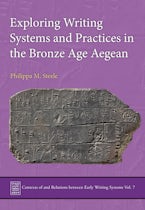Examines how monumental spaces shaped power, community identities, and political agency in ancient societies through collective practices and competing uses of space.
Monumental spaces were fundamental in the construction of power, political order and community identities in the ancient and pre-modern world. It was for this reason that authorities invested heavily in the construction of ideal landscapes of power that embodied the basic representation about what a harmonious society and an ordered world under the inspired guidance of the ruler(s) was. Such landscapes conveyed thus powerful cultural values and ideals about the social order that had produced them, not to speak about the authorities’ ability –who designed and built them – to lead their societies. However, far from being fixed over time, those spaces underwent changes to accommodate new values, to express a new balance of power resulting in transformations, rebuilding, integration of selected aspects of the past or, simply, utter destruction of landscapes no longer functional.
In some societies, ceremonies were open, addressed to the whole society―at least as witnesses―in which their rulers performed the construction of social order and received divine support. The Maya cities, for example, with their loose urban density and open spaces dominated by autonomous neighbourhoods, epitomize the ideological need to gather society as spectators. Plazas became thus essential to negotiate consent and social consensus. In other cases the absence of open spaces – including cult ones – in which the community may gather and participate in collective performances points to oligarchical and somewhat secluded configurations of power, as in pharaonic Egypt, while, in the Classical world, agoras, forums and open spaces were intended to facilitate collective political deliberation.
Urban layouts may bear traces of rival uses of space, for instance between “official” ceremonial areas, reserved to pageantry displays, and areas that were more organic, difficult to control but which favoured the concentration of crafts and guilds, alternative circulation of news and construction of counterpowers, like bazaars. The archaeological focus put on ceremonial spaces and prestige buildings may thus conceal the political importance of those other spaces and the counter-power issued there, with the lack specifically-designed buildings significant in itself.
The aim of this book is to explore the relation between built environments, collective identities and political agency and the potential conflicts arising from competing or alternative social uses of the space, be it public, ritual, civic or a mix of all of them. A selection of historical case-studies from different regions of the world may help rethink current concepts and views about the traces that communal political agency left in the organization of settlements and in planning monumental areas. Such cases may also cast some light over the limits of rulers’ authority and the existence of collective institutions―formal or informal―rarely evoked in official sources. In the end, this book explores the importance of comparative research to address collective decision-making and communal identities in the pre-modern world.
1. Introduction
Juan Carlos Moreno García
2. Understanding the North-West palace in the Neo-Assyrian capital of Nimrud as people’s movement and sensorial experience of space
Paolo Brusasco
3. A tale of two tells: Making pots, making monuments, making polity
Anne Porter
4. Building monuments to build communities: Monumental space as public space in the Iron Age Levant
Tim Hogue
5. Identities, space, monumentality at Avaris
Silvia Gómez-Senovilla
6. Public spaces, power and representation in Bronze Age Egyptian urbanism
Juan Carlos Moreno García
7. Political memory and imagined diversity. Agorai and theatres in Near Eastern Hellenistic cities: Public spaces and political agency
Claudia Horst
8. Plazas and theatrical performances in ancient Maya society: A case from El Palmar, Mexico
Kenichiro Tsukamoto
9. Real, imagined, vibrant: Ruins-as-cemeteries in ancient coastal Peru
David Chicoine and Matthew Helmer
10. Collectivity and monumentality in Indigenous eastern North America
Victor Thompson and Jennifer Birch
11. Reimagining structures of power: The role of kiva architecture in religious and political reorganization in the U.S. Southwest
Susan C. Ryan
12. Agency and invisibility in the Islamic city: Qadīb al-Bān and the city’s edge
Ethel Sara Wolper
13. Power and monumentality in (Islamic) towns of precolonial Africa
Monika Baumanova
14. Power, patronage and pilgrimage within early historic and medieval Anuradhapura, Sri Lanka: the development of state and Shanga relations and the representations and limits of royal control
Christopher Davis, Robin Coningham and Prishanta Gunawardhana
15. The importance of communal spaces in Scandinavia. Collective control vs elite authority and processes of state formation (800–1350 CE)
Marie K. Ødegaard & and Kjetil Loftsgarden
Juan Carlos Moreno García (PhD in Egyptology, 1995) is a CNRS senior researcher at the University of Paris IV-Sorbonne, as well as lecturer on social and economic history of ancient Egypt at the École Pratique des Hautes Études (EPHE) in Paris. He has published extensively on the administration, socio-economic history, and landscape organisation of ancient Egypt, usually in a comparative perspective with other civilisations of the ancient world, and has organised several conferences on these topics.












